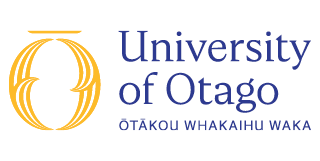Overview
Understanding and applying the principles of descriptive analysis. Advanced methods of data collection and analysis for consumer data. Applications of sensory science in the food industry and research settings.
In this paper, students will gain in-depth knowledge in a range of advanced sensory methods. They will be asked to undertake laboratory activities relating to sensory evaluation and eating behaviour. Upon completion of this paper, students are expected to have theoretical and practical knowledge of sensory evaluation. Students will also gain an understanding of the emerging area of sensory nutrition and important considerations to use sensory data in research into food choice and eating behaviour.
Students will become knowledgeable in using univariate and multivariate analyses to analyse big datasets. Students will become skilled in interpreting sensory data and understanding practical relevance of statistical results.
Issues of statistical data analysis will also be dealt with throughout the paper. Statistical analysis of sensory test data will involve SPSS or XLSTAT.
About this paper
| Paper title | Advanced Sensory Science |
|---|---|
| Subject | Food Science |
| EFTS | 0.15 |
| Points | 18 points |
| Teaching period | Semester 1 (On campus) |
| Domestic Tuition Fees ( NZD ) | $1,173.30 |
| International Tuition Fees | Tuition Fees for international students are elsewhere on this website. |
- Prerequisite
- FOSC 213 or FOSC 206
- Schedule C
- Science
- Contact
- mei.peng@otago.ac.nz
- Teaching staff
- Paper Structure
Lectures will cover the following areas:
- Fundamental theories of sensory measures
- Measures of eating behaviour
- Sensory drivers of eating
- Applied sensory research and tools
- Latest methods applied in consumer sensory testing
- Applications of sensory methods in health research
- Teaching Arrangements
This paper consists of two lectures per week and one laboratory class per week.
Assessment:
- Term test 15%
- Lab Data Report 5%
- Project Report 30%
- Final Exam 50%
- Textbooks
The following sensory science text books, available through the Library, will be useful throughout the paper:
- Lawless, H., & Heymann, H. (2010). Sensory Evaluation of Food: Principles and Practices. (e-book)
- O'Mahony, M. (1986). Sensory Evaluation of Food: Statistical Methods and Procedures. New York, NY, USA: Marcel Dekker, Inc. (Library)
- Stone, H., Bleibaum, R. & Thomas, H.A. (2012). Sensory Evaluation Practices (4th ed.). (e-book)
- Graduate Attributes Emphasised
- Interdisciplinary perspective, Communication, Ethics, Research, Teamwork.
View more information about Otago's graduate attributes. - Learning Outcomes
On completion of FOSC 306 students are expected to gain in-depth understanding of advanced psychophysical theories. The students are expected to be able to:
- Organise and carry out sensory tests, and apply appropriate statistical analysis methods and, finally interpret the results obtained
- Design and carry out applied sensory evaluation analyses and consumer sensory testing on commercial food or beverage products
- Explain appropriate uses of multivariate analysis in sensory and consumer testing (PCA, preference mapping)
- Interpret and critically assess published sensory science research
- Discuss current and future directions of sensory science
